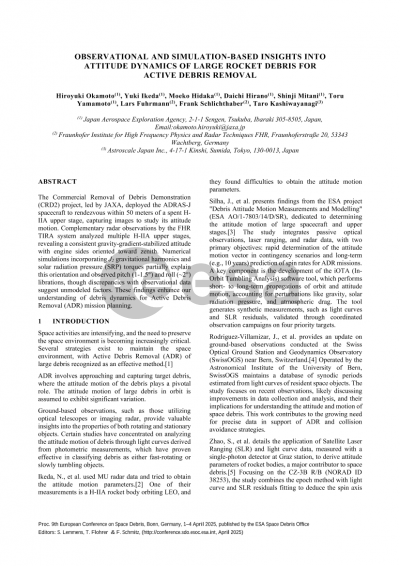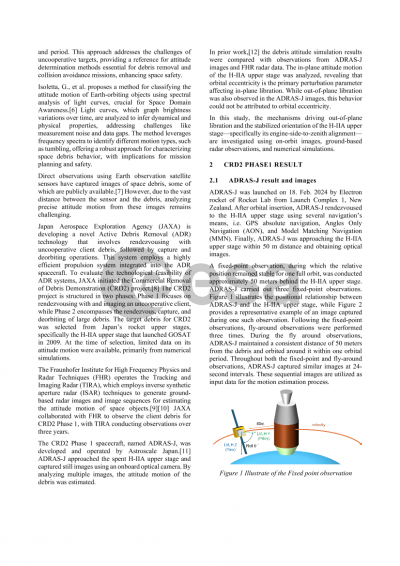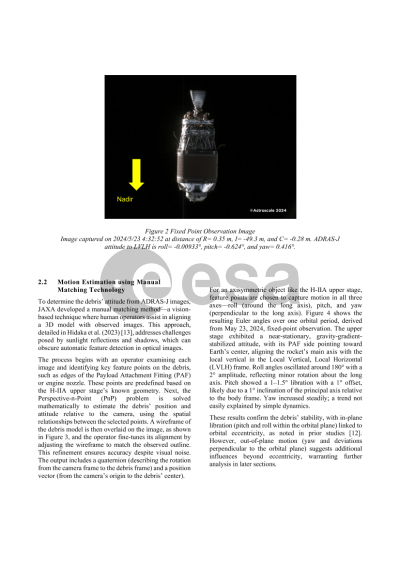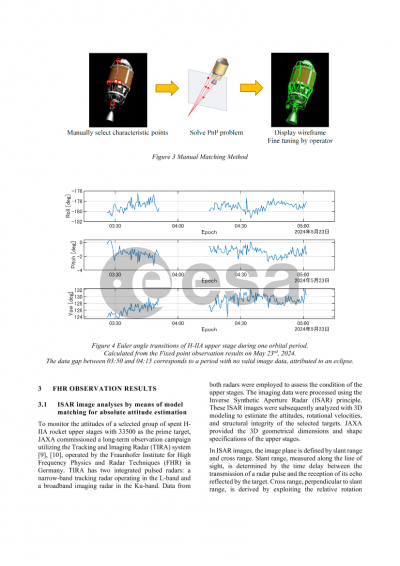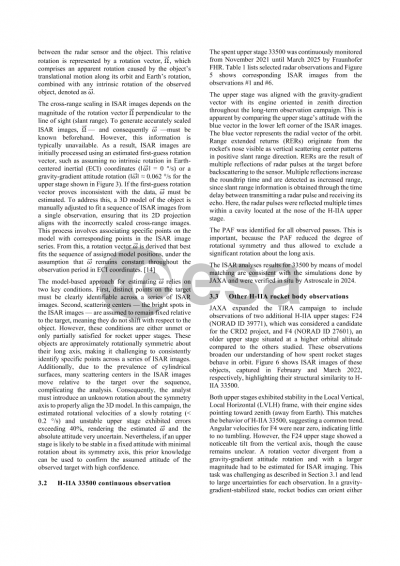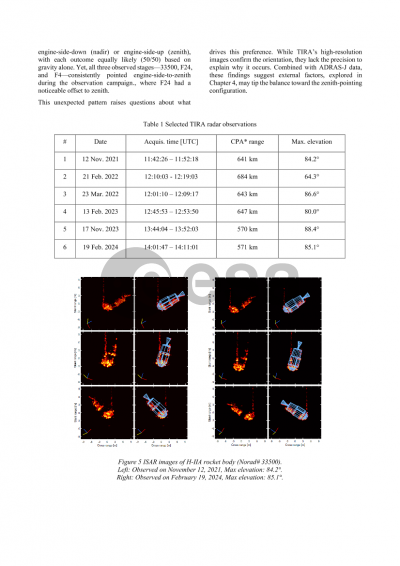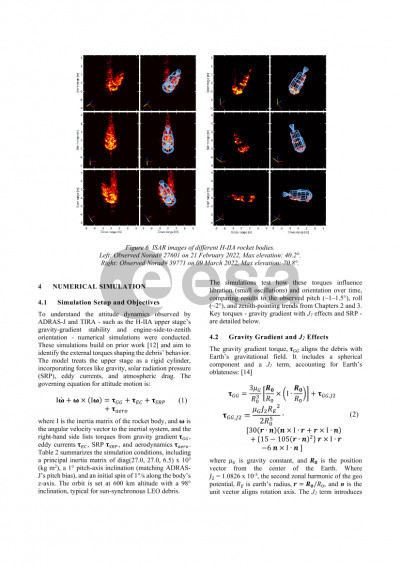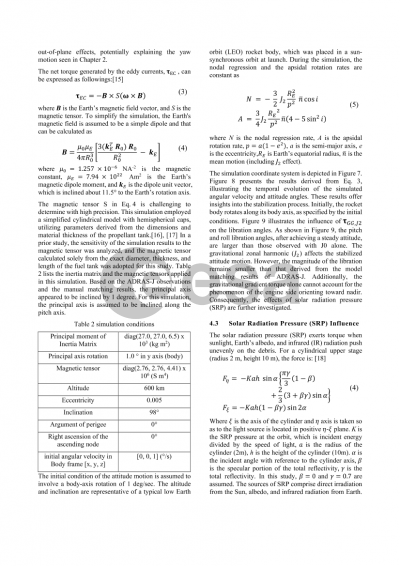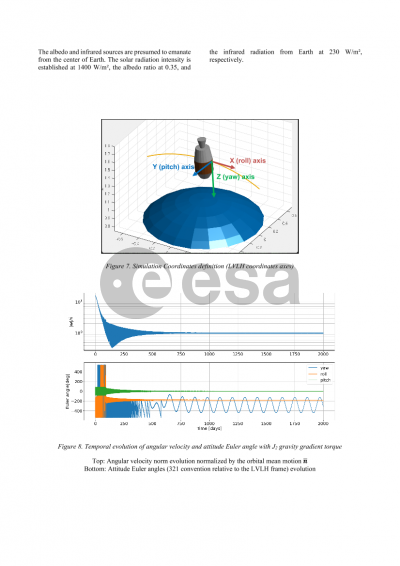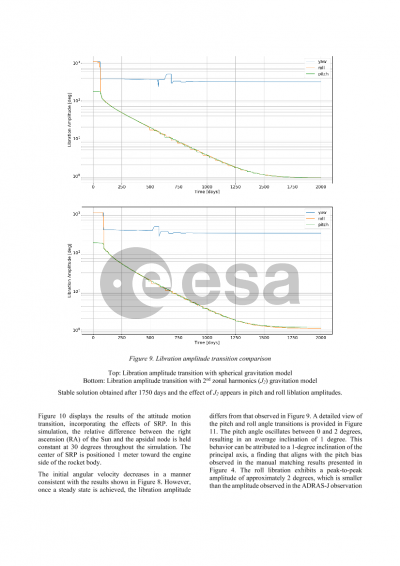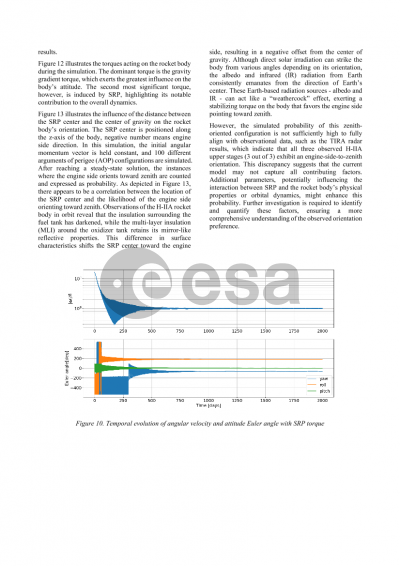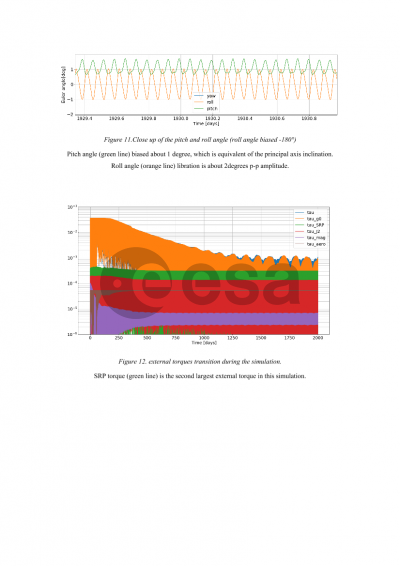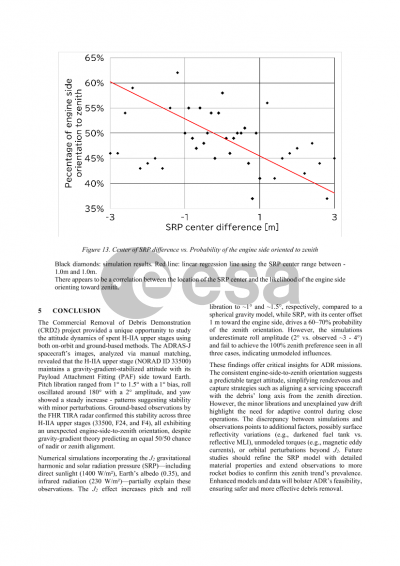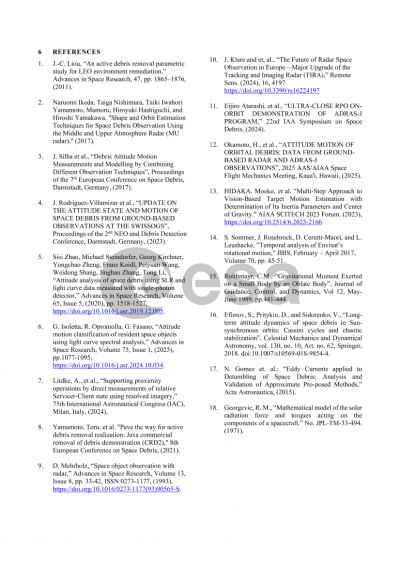Document details

Abstract
The attitude dynamics of large space debris present a considerable challenge in the design of active debris removal (ADR) systems, particularly in developing reliable capture functions. In case the debris' attitude motion, or rate of rotation, exceeds the rotational speed limits specified in the design criteria, the ADR system must incorporate an angular momentum damping mechanism to effectively stabilize the target for capture.
The Japan Aerospace Exploration Agency (JAXA) launched the Commercial Removal of Debris Demonstration (CRD2) program, partnering with Astroscale Japan, which developed the ADRAS-J spacecraft for Phase 1 of the CRD2 program. ADRAS-J successfully rendezvoused with the aforementioned spent H-IIA rocket upper stage, which was launched 15 years ago and remains in polar orbit. From a distance of 50 meters, ADRAS-J captured high-resolution optical images, enabling to perform a detailed analysis of the target’s attitude including also this visual data.
In order to determine the target's relative attitude to ADRAS-J from each image, we employed a manual matching technique. By integrating these images with satellite telemetry data, precise estimates of the target’s attitudes and motions over time were obtained. These estimations confirmed that the rocket body’s attitude remains approximately stable within the Local Vertical Local Horizontal (LVLH) frame.
Here we present numerical simulations to analyze the attitude behavior of a large rocket upper stage, incorporating torques induced by both gravity gradients and eddy currents. Simulation results indicated that the attitude motion stabilizes along the gravity gradient in the LVLH frame, assuming the target follows a near-circular orbit over an extended period. These results appear consistent with the observational data collected by ADRAS-J.
In addition, we carried out detailed observations of the H-IIA rocket body using the Tracking and Imaging Radar TIRA of Fraunhofer FHR. A detailed analysis of the obtained imaging data shows that the rocket body’s attitude remains consistently stable within the LVLH frame across multiple instances. The findings revealed a gravity-gradient-stabilized attitude pattern consistent with both the simulation results and ADRAS-J observations.
When the rocket body is stabilized by gravity gradient, its orientation generally aligns in one of two configurations: with the engine nozzle directed either toward the zenith or the nadir. According to previous TIRA radar data, many H-IIA rocket bodies, including the CRD2 target, consistently stabilize with the nozzle facing the zenith. Simulation results suggest that this prevalent orientation may result from the balancing effect of solar radiation pressure torques. The attitude motion of the rocket body, as derived from ADRAS-J images, exhibited a small, slow libration relative to the LVLH frame. This oscillatory behavior can be explained by incorporating orbital eccentricity into the simulation model, aligning the observed motion with theoretical expectations. Further analysis and additional findings will be discussed in detail in the paper.
Preview
